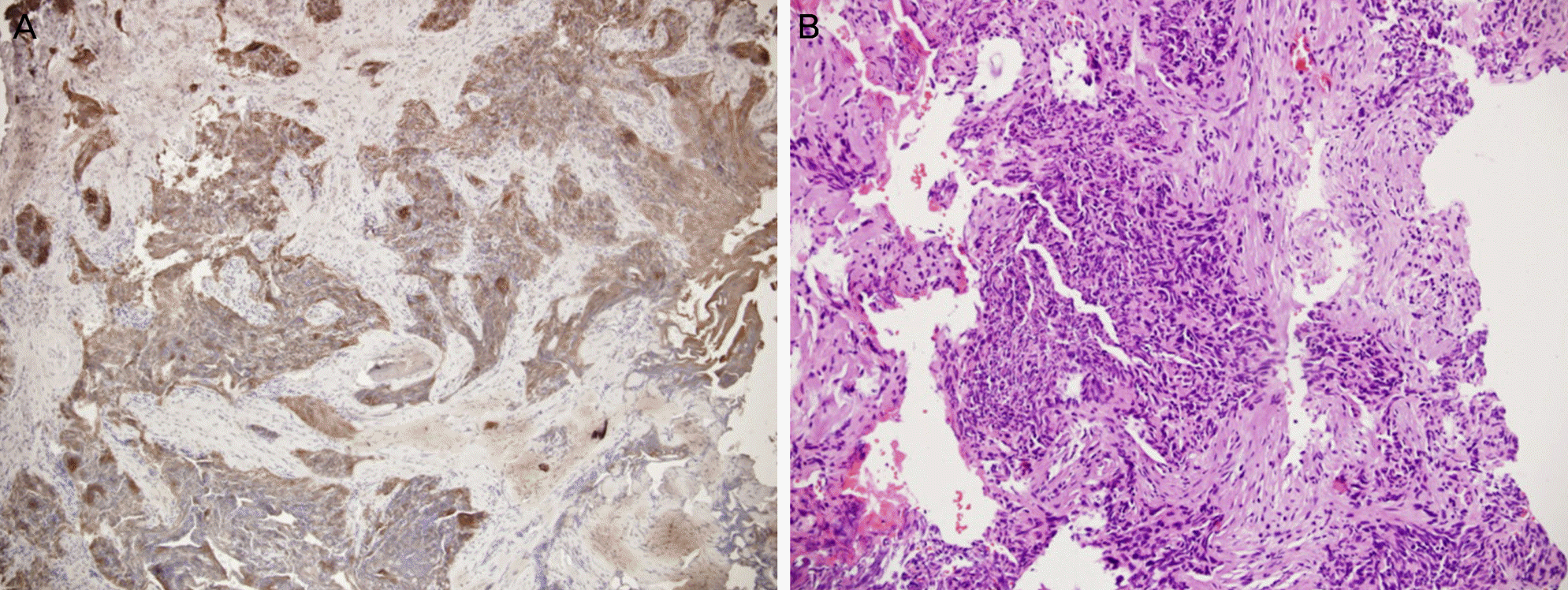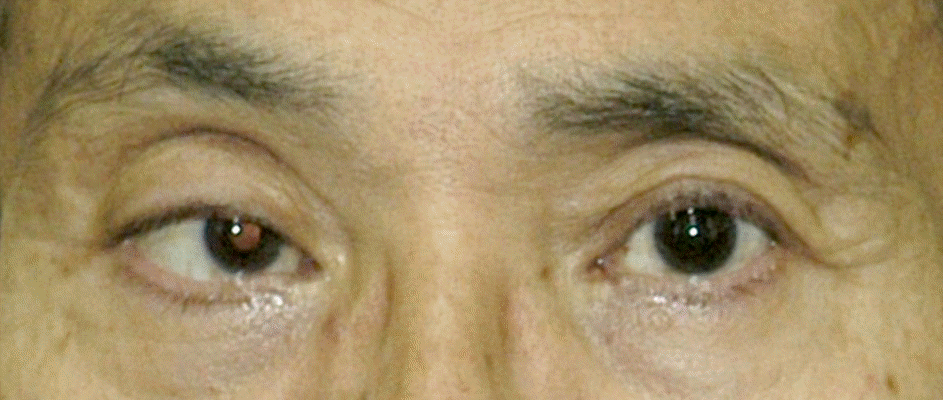Abstract
Purpose
To report a rare case of a patient with diplopia due to a mass in the sphenoidal sinus, histologically diagnosed as carcinoma.
Case summary
A 57-year-old male visited our clinic complaining of diplopia and ptosis for 10 days. He had esotropia 45 prism diopters in the primary position, markedly limited abduction, and a 4 mm dilated pupil in the right eye compared with a 2 mm pupil in the left eye. Enhanced magnetic resonance imaging revealed a sphenoidal sinus mass extended into the pituitary gland and sella turcica with homogeneous intense enhancement. Metastatic workups, including CT of the head, neck, chest, and abdomen were unremarkable. He underwent a transsphenoidal approach mass debulking surgery followed by radiotherapy for 6 weeks. Histological findings were compatible with carcinoma. Six weeks after radiotherapy he had esotropia of 20 prism diopters in the primary position. Abduction limitation was partially recovered postoperatively.
References
1. DeMonte F, Ginsberg LE, Clayman GL. Primary malignant tumors of the sphenoidal sinus. Neurosurgery. 2000; 46:1084–91.

3. Harbison JW, Lessell S, Selhorst JB. Neuro-ophthalmology of sphenoid sinus carcinoma. Brain. 1984; 107:855–70.

4. Lawson W, Reino AJ. Isolated sphenoid sinus disease: an analysis of 132 cases. Laryngoscope. 1997; 107:1590–5.

6. Pearlman SJ, Lawson W, Biller HF, et al. Isolated sphenoid sinus disease. Laryngoscope. 1989; 99:716–20.

7. Wyllie JW 3rd, Kern EB, Djalilian M. Isolated sphenoid sinus lesions. Laryngoscope. 1973; 83:1252–65.

8. Vedrine PO, Thariat J, Merrot O, et al. Primary cancer of the sphenoid sinus–a GETTEC study. Head Neck. 2009; 31:388–97.

9. Moster ML, Savino PJ, Sergott RC, et al. Isolated sixth-nerve palsies in younger adults. Arch Ophthalmol. 1984; 102:1328–30.

10. Tiffin PA, MacEwen CJ, Craig EA, Clayton G. Acquired palsy of the oculomotor, trochlear and abducens nerves. Eye (Lond). 1996; 10:377–84.

11. Jeon C, Sa HS, Oh SY. Causes and natural course of the sixth cranial nerve palsy. J Korean Ophthalmol Soc. 2006; 47:1776–80.
12. Alvarez I, Suárez C, Rodrigo JP, et al. Prognostic factors in paranasal sinus cancer. Am J Otolaryngol. 1995; 16:109–14.

13. Kataria R, Gupta S, Chopra S, et al. Mucocele of the sphenoid sinus: A rare cause of reversible 3(rd) nerve palsy. Ann Indian Acad Neurol. 2012; 15:158–60.
14. Momtchilova M, Rakotoarisoa R, Roger G, et al. [Unilateral isolated partial third nerve palsy and sphenoiditis in a child: A case report]. J Fr Ophtalmol. 2012; 35:348–52.
15. Albayram S, Ozer H, Sarici A, et al. Unilateral mydriasis without ophthalmoplegia–a sign of neurovascular compression? Case report. Neurosurgery. 2006; 58:E582–3.

16. Guerrier Y, Dejean Y, Galy G, Botella JP. [Primary cancers of sphenoidal sinus]. J Fr Otorhinolaryngol Audiophonol Chir Maxillofac. 1968; 17:45–54.
17. Moore GF, Massey JD, Yonkers AJ. Abducens nerve paralysis: a potential presentation of sphenoid sinus cancer. Otolaryngol Head Neck Surg. 1986; 94:249–53.

18. Dempster JH, MacKenzie K. Squamous carcinoma of the sphenoid sinus in association with inverted papillomatosis. J Laryngol Otol. 1988; 102:938–40.

19. Chui MC, Briant TD, Gray T, et al. Computed tomography of sphenoid sinus mucocele. J Otolaryngol. 1983; 12:263–9.
Figure 2.
Nine cardinal gaze photographs at the first visit showing approximately 40 prism diopters of right esodeviation (center) and limitation of extraocular movement in the right eye.

Figure 3.
T1-weighted coronal (A) and sagittal (B) magnetic resonance image. Preoperative magnetic resonance (MR) images show homogenous intense enhanced mass in the sphenoidal sinus extended into pituitary gland and sella turcica.

Figure 4.
Histopathologic findings and immunochemical staining of the specimen. (A) The tumor cells were positive for cytokeratin immunostaining (immunochemical stain for the selected proteins, ×100). (B) Tissue shows numerous pleomorphic cell with hyperchroma sia and atypical mitotic figures (hema toxylin-eosin stain, ×200).





 PDF
PDF ePub
ePub Citation
Citation Print
Print




 XML Download
XML Download